Themed collection Recent Advances in Solar Energy Conversion and Utilization

A perspective on fabricating carbon-based nanomaterials by photocatalysis and their applications
Synthesis of carbon-based nanomaterials through either a photocatalytic oxidative or photocatalytic reductive pathway.
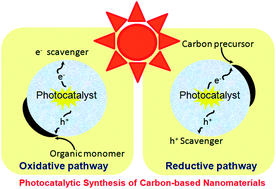
Energy Environ. Sci., 2012,5, 9307-9318
https://doi.org/10.1039/C2EE22128D
Applications of light scattering in dye -sensitized solar cells
This paper reviews the applications of light scattering in DSCs over the past two decades and some recent progress in this topic.
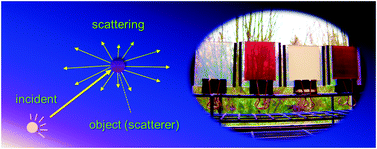
Phys. Chem. Chem. Phys., 2012,14, 14982-14998
https://doi.org/10.1039/C2CP43089D
Wavefunction engineering in quantum confined semiconductor nanoheterostructures for efficient charge separation and solar energy conversion
Electron and hole wavefunctions in semiconductor nanoheterostructures can be tuned to improve their light harvesting and charge separation properties.
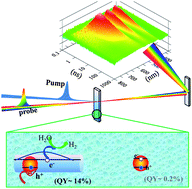
Energy Environ. Sci., 2012,5, 9406-9418
https://doi.org/10.1039/C2EE22679K
Hierarchical TiO2 microspheres: synthesis, structural control and their applications in dye -sensitized solar cells
Dye-sensitized solar cells (DSSCs), as a type of promising energy conversion device, have received much attention in the past two decades due to their high efficiency and low cost.
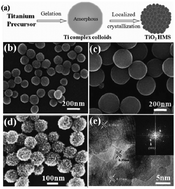
RSC Adv., 2012,2, 11629-11637
https://doi.org/10.1039/C2RA22043A
Iodine/iodide-free redox shuttles for liquid electrolyte-based dye -sensitized solar cells
A timely review of published iodine/iodide-free redox shuttles for liquid electrolyte-based dye-sensitized solar cells.
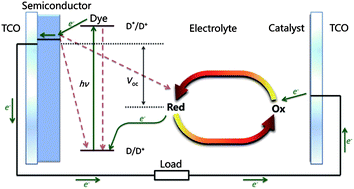
Energy Environ. Sci., 2012,5, 9180-9194
https://doi.org/10.1039/C2EE22095D
Morphology characterization in organic and hybrid solar cells
Deciphering complex, multiple-length-scale structures within organic and hybrid photovoltaics requires diverse techniques.
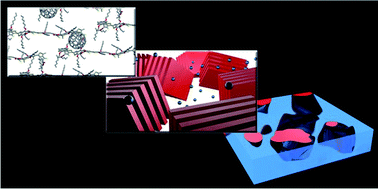
Energy Environ. Sci., 2012,5, 8045-8074
https://doi.org/10.1039/C2EE22056C
Excitation energy transfer in multiporphyrin arrays with cyclic architectures: towards artificial light-harvesting antenna complexes
This tutorial review highlights the mechanisms and rates of excitation energy transfer in a variety of cyclic porphyrin arrays revealed by time-resolved spectroscopic measurements.
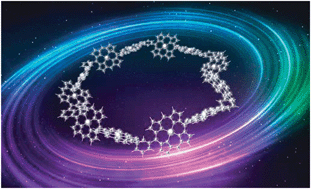
Chem. Soc. Rev., 2012,41, 4808-4826
https://doi.org/10.1039/C2CS35022J
Thermodynamics and kinetics of CO2 , CO , and H+ binding to the metal centre of CO2 reduction catalysts
This tutorial review describes CO2 reduction with particular focus on studying the thermodynamics and kinetics of CO2 binding to metal catalysts.

Chem. Soc. Rev., 2012,41, 2036-2051
https://doi.org/10.1039/C1CS15278E
Charge transfer in organic molecules for solar cells: theoretical perspective
Theoretical approaches for charge transfer rates from weak to strong electronic coupling in organic molecules for solar cells.

Chem. Soc. Rev., 2012,41, 1075-1087
https://doi.org/10.1039/C1CS15207F
Photosensitized electron transfer processes of nanocarbons applicable to solar cells
Supramolecularly modified carbon nanomaterials with photosensitizing electron donor or acceptor molecules for light energy harvesting applications are reported.
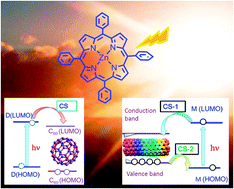
Chem. Soc. Rev., 2012,41, 86-96
https://doi.org/10.1039/C1CS15201G
Trends in patent applications for dye -sensitized solar cells
Patent applications for dye-sensitized solar cell technology have been analyzed over time, as well as technical, organizational, and geographical trends.

Energy Environ. Sci., 2012,5, 7376-7380
https://doi.org/10.1039/C2EE03323B
CoFe2O4 on a porous Al2O3 nanostructure for solar thermochemical CO2 splitting
We introduce the application of “hercynite chemistry” in a nano-engineered structure for the solar thermochemical CO2 process.
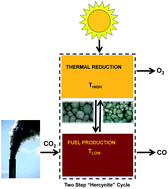
Energy Environ. Sci., 2012,5, 9438-9443
https://doi.org/10.1039/C2EE22090C
Solar driven hydrogen releasing from urea and human urine
Solar driven hydrogen releasing from urea and human urine is achieved at zero-bias with the assistance of Ni(OH)2-modified TiO2 nanowires.

Energy Environ. Sci., 2012,5, 8215-8219
https://doi.org/10.1039/C2EE22087C
Disentangling the impact of side chains and fluorine substituents of conjugated donor polymers on the performance of photovoltaic blends
Simultaneous incorporation of bulky side chains and fluorine substituents on the conjugated backbone leads to highly efficient polymer solar cells.
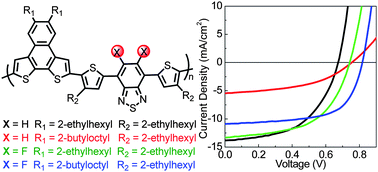
Energy Environ. Sci., 2013,6, 316-326
https://doi.org/10.1039/C2EE23235A
Nickel oxide nanostructured electrodes towards perylenediimide-based dye -sensitized solar cells
In this work, we have realized nickel oxide (NiO) electrodes that serve as photocathodes in p-type dye-sensitized solar cells (p-DSSCs) sensitized by dendronized perylenediimides (PDIs).
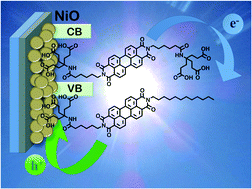
RSC Adv., 2012,2, 11495-11503
https://doi.org/10.1039/C2RA22206J
Effects of water intrusion on the charge-carrier dynamics, performance, and stability of dye -sensitized solar cells
Adding 10% water alters the energy level alignments and reduces recombination but has no effect on transport and cell stability.
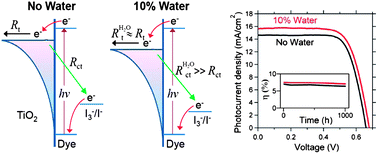
Energy Environ. Sci., 2012,5, 9492-9495
https://doi.org/10.1039/C2EE22178K
Visible-light-driven nonsacrificial water oxidation over tungsten trioxide powder modified with two different cocatalysts
Nonsacrificial water oxidation over PtOx/WO3 in aqueous NaIO3 solution is enhanced upon modification by an O2 evolution cocatalyst.
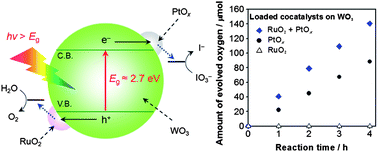
Energy Environ. Sci., 2012,5, 8390-8397
https://doi.org/10.1039/C2EE21801A
Visible light driven photocatalytic evolution of hydrogen from water over CdS encapsulated MCM-48 materials
The photocatalytic activity of the CdS incorporated MCM-48 mesoporous photocatalysts was found to be dependent on the CdS loading and the pore size of MCM-48 siliceous support. The highest solar hydrogen evolution rate by visible light irradiation from the splitting of water was determined to be 1.81 mmol h−1 per gCdS and the apparent quantum yield was estimated to be 16.6%.

RSC Adv., 2012,2, 5754-5767
https://doi.org/10.1039/C2RA20714A
Improving the photocatalytic performance of graphene –TiO2 nanocomposites via a combined strategy of decreasing defects of graphene and increasing interfacial contact
Incessant interest has been shown in the synthesis of graphene (GR)–semiconductor nanocomposites as photocatalysts aiming to utilize the excellent electron conductivity of GR to lengthen the lifetime of photoexcited charge carriers in the semiconductor and, hence, improve the photoactivity.

Phys. Chem. Chem. Phys., 2012,14, 9167-9175
https://doi.org/10.1039/C2CP41318C
Dye adsorption , desorption, and distribution in mesoporous TiO2 films, and its effects on recombination losses in dye sensitized solar cells
Novel results from the application of common sense and robust methods to characterize electron transfer from dye-coated TiO2 to iodine.
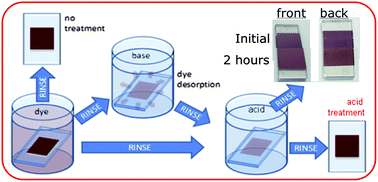
Energy Environ. Sci., 2012,5, 7203-7215
https://doi.org/10.1039/C2EE21341A
Syngas production by simultaneous splitting of H2O and CO2via ceria redox reactions in a high-temperature solar reactor
A 2-step thermochemical redox cycle is performed in a solar cavity receiver-reactor directly exposed to concentrated (>2800 suns) thermal radiation.
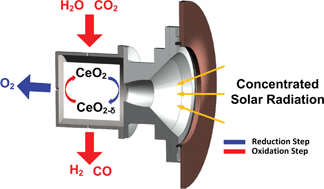
Energy Environ. Sci., 2012,5, 6098-6103
https://doi.org/10.1039/C1EE02620H
About this collection
Energy & Environmental Science, Physical Chemistry Chemical Physics (PCCP) and RSC Advances are delighted to present a themed-collection highlighting research on ‘Recent Advances in Solar Energy Conversion and Utilization’ in connection with a symposium held at the ACS National Meeting & Exposition in March 2012, Guest Edited by Ranjit Koodali and Velu Subramani.